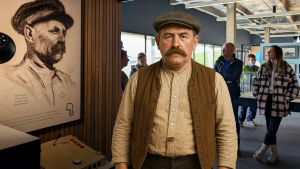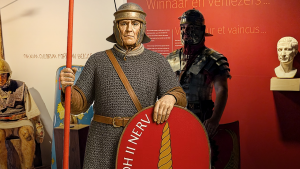AI in museums
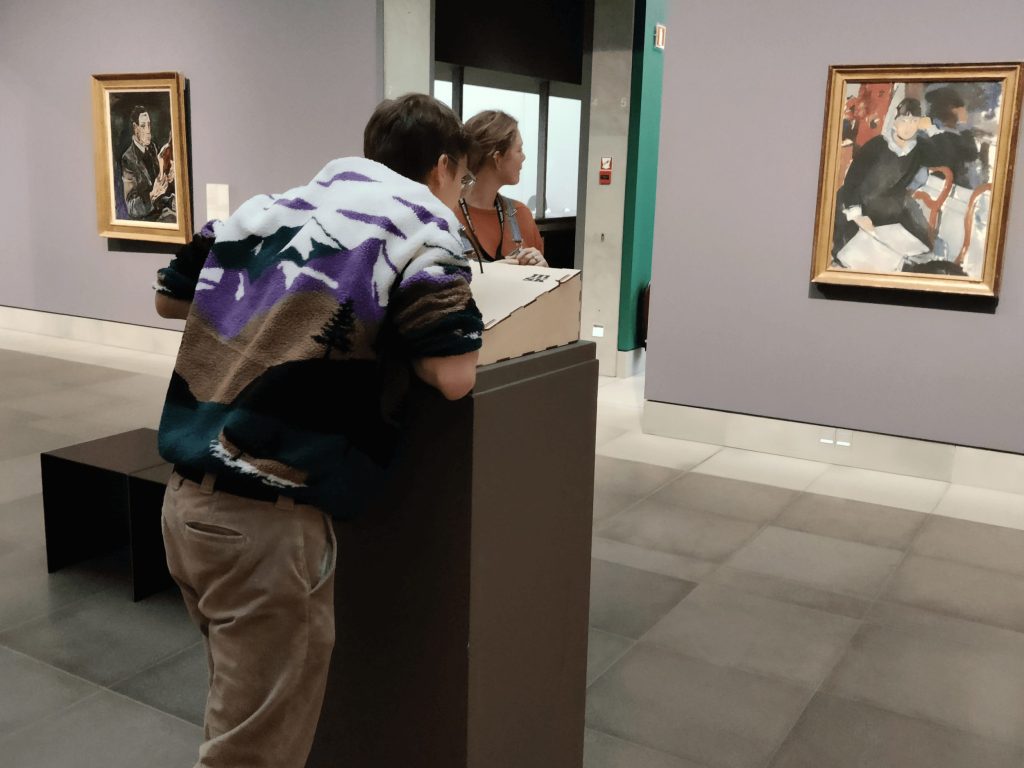
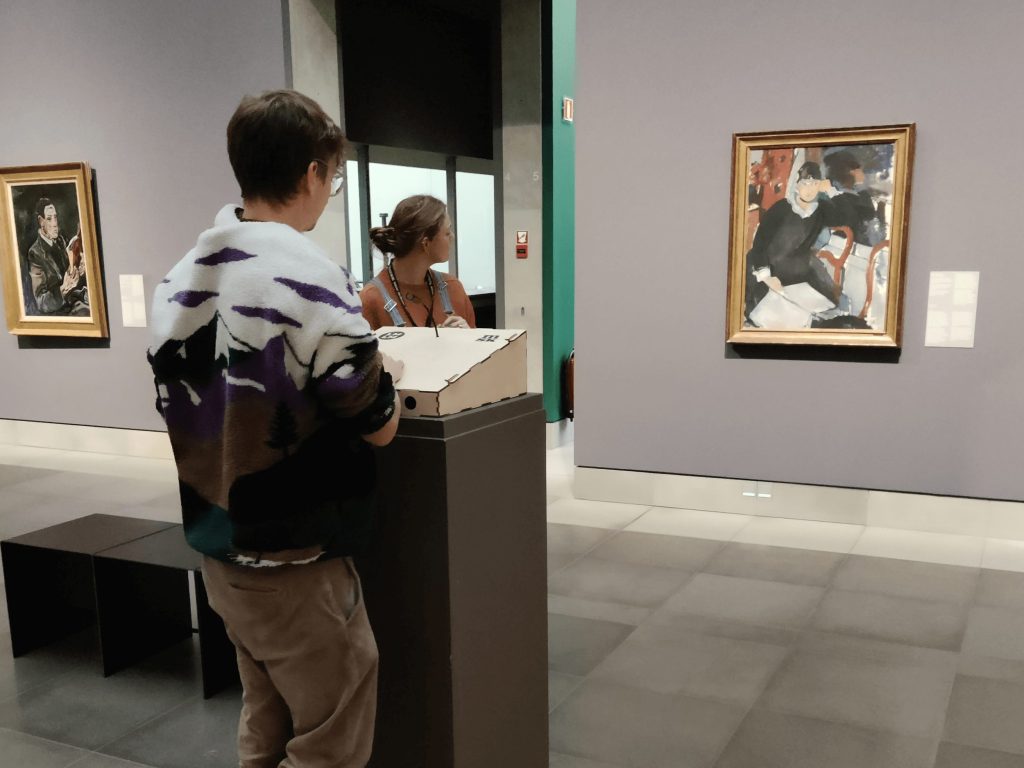
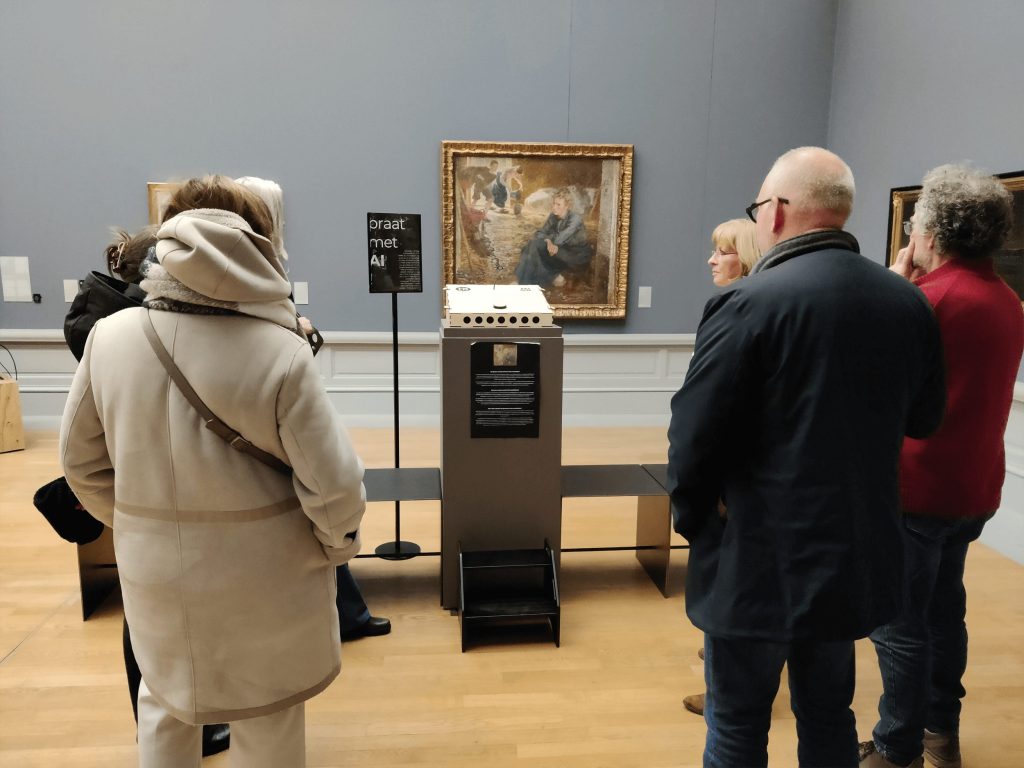
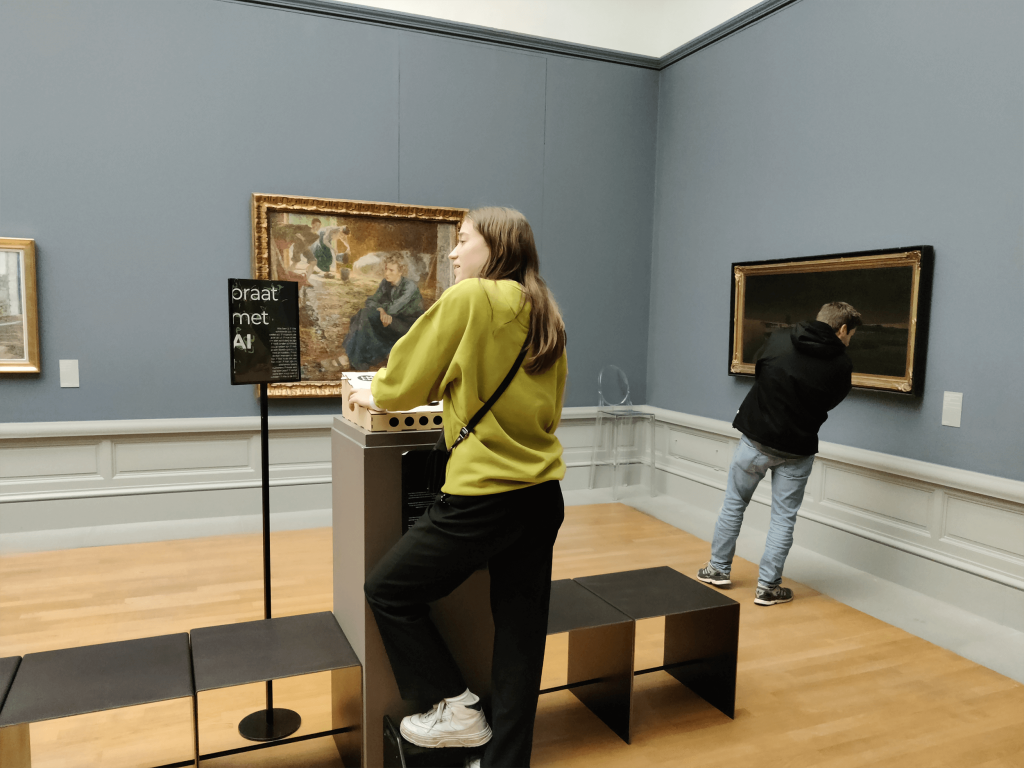
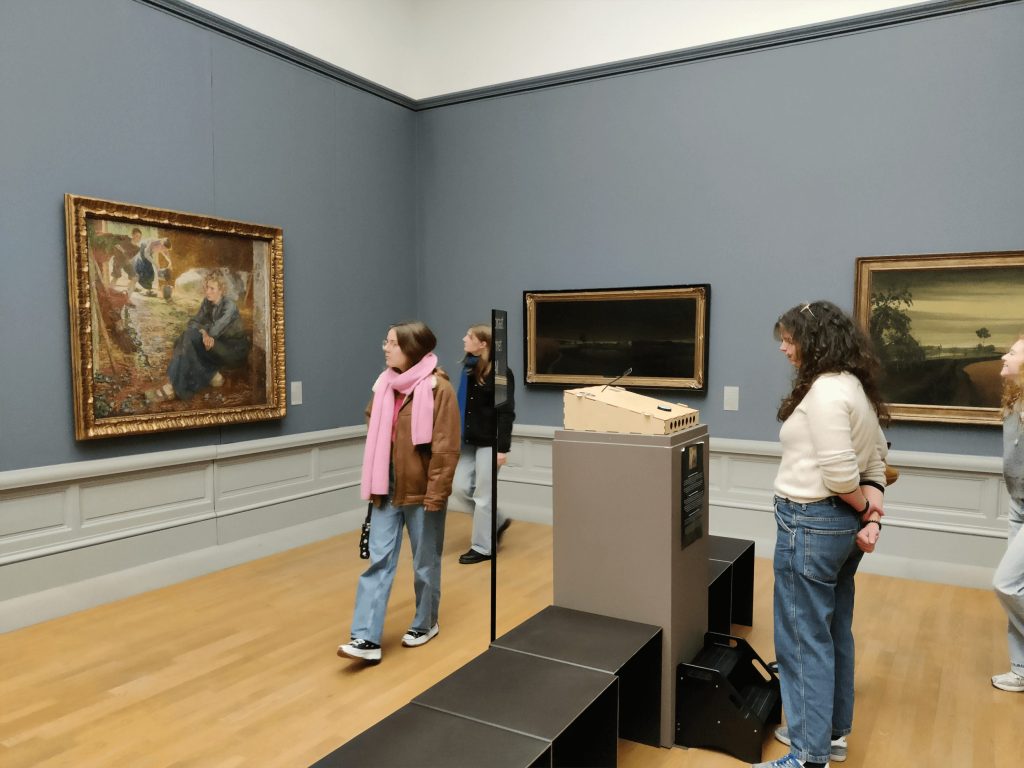
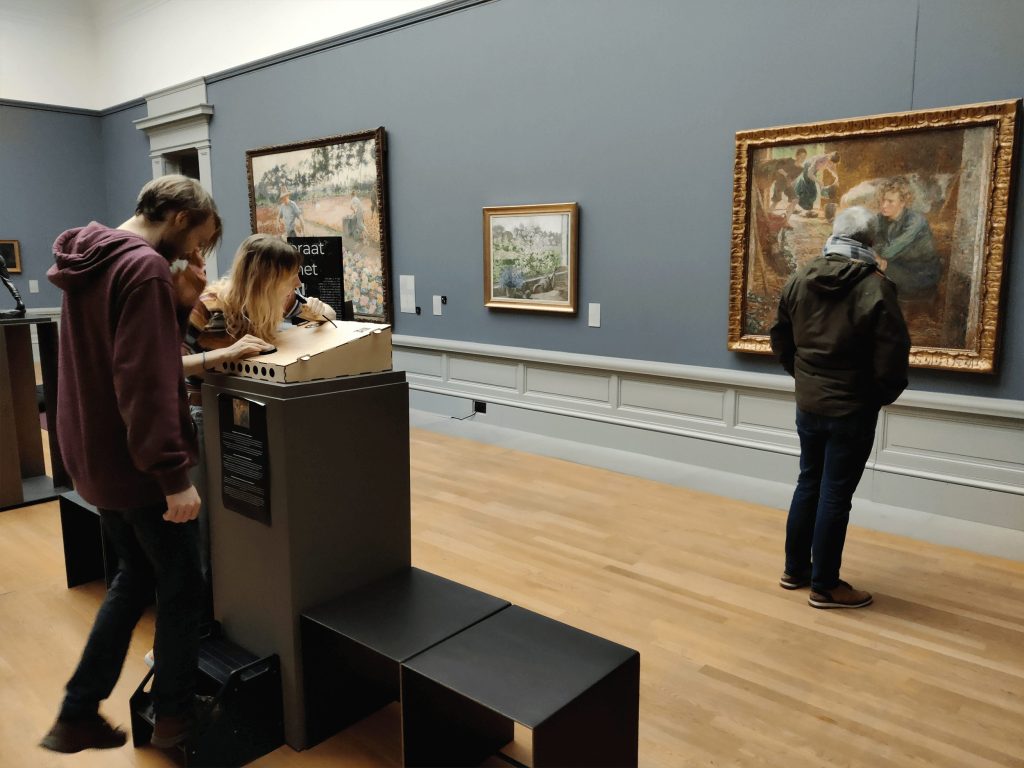
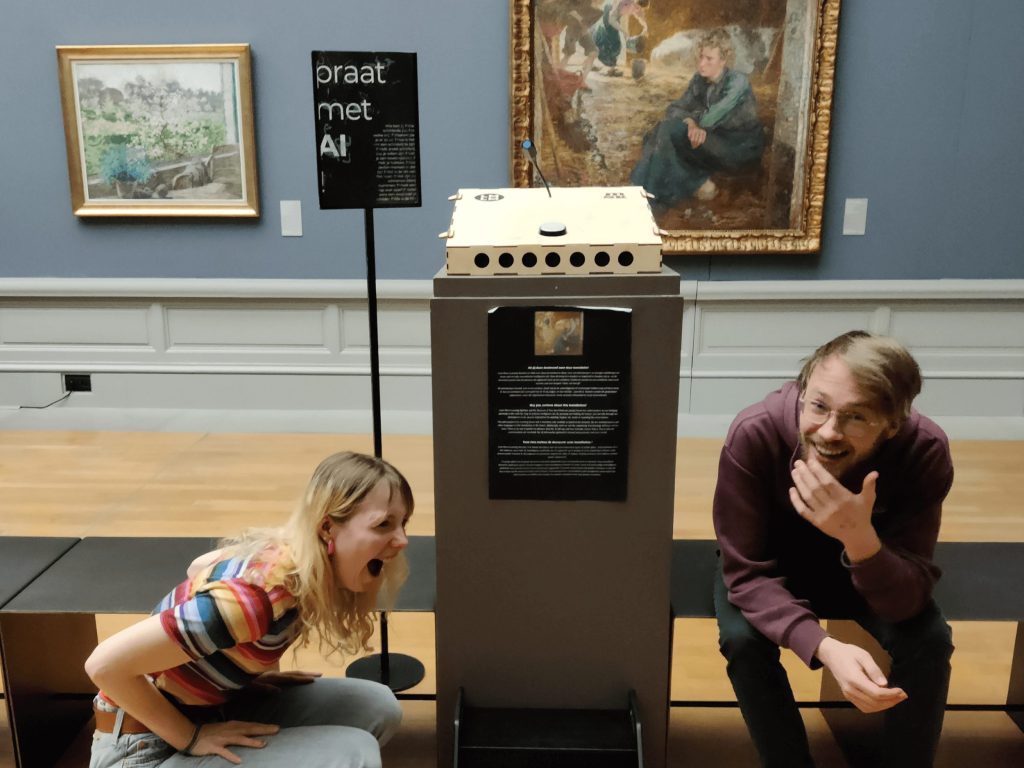
These are photos from the Museum of Fine Arts in Ghent, Belgium. They show people talking to a painting in a museum. It’s AI in museums at work!
As everyone knows, artificial Intelligence is sending shockwaves in the way visitors experience museums. AI will improve the way people are able to enjoy museums and art galleries.
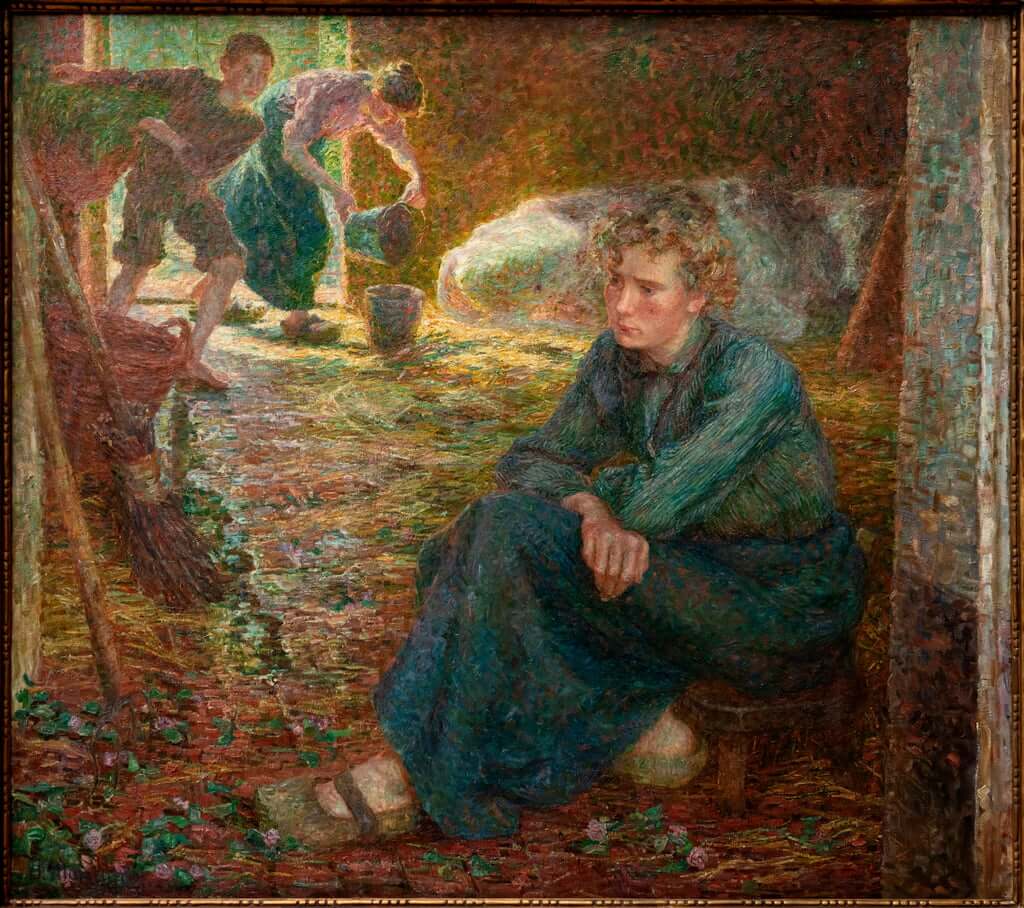
Why museums need AI
This is ‘the Cattle Shed’ by Jenny Montigny. A dignified artwork that shows a farmer sitting on a stool in an animal barn. The luminosity art style clashes with the sadness of the main woman’s facial expression.
The audio guide doesn’t have time to give all available information about this painting. Neither does the plaque next to the painting. There’s no space or time to give all the available info, and after all, how is the museum supposed to know what the visitor is interested in? Maybe it’s the historical background, the painter’s motivation, perhaps the artistic style or just what are those 2 children doing in the background?
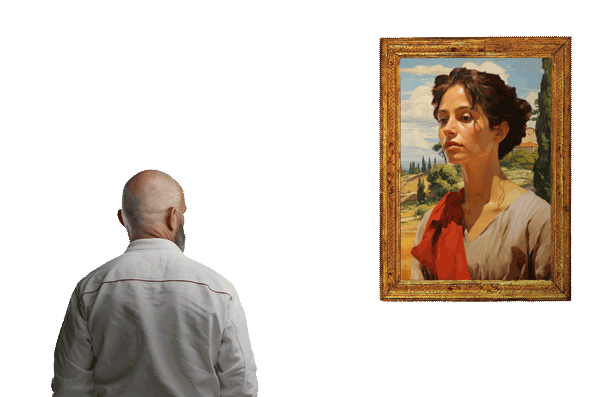
With the help of artificial intelligence, the visitor can ask every question they are interested in. It allows them to learn much more about the painting, the artist, the art style, the depictions and the artistic endeavor in general. It’s no surprise that so many people were lining up to talk to this painting. Almost all visitors were very positive about their experience.
All questions are kept in a log and saved for future analysis. This allows the museum to learn what exactly it is that people want to know about the paintings in their collection. Thanks to semantic analysis, museums can now learn why people visit them in the first place. That’s one of the beautiful things of what the Talking Pictures project does with AI in museums. Learning about what questions people have about their collection, reveals what people’s motivations are to visit their museum which, in turn, allows them to communicate to their audience better.
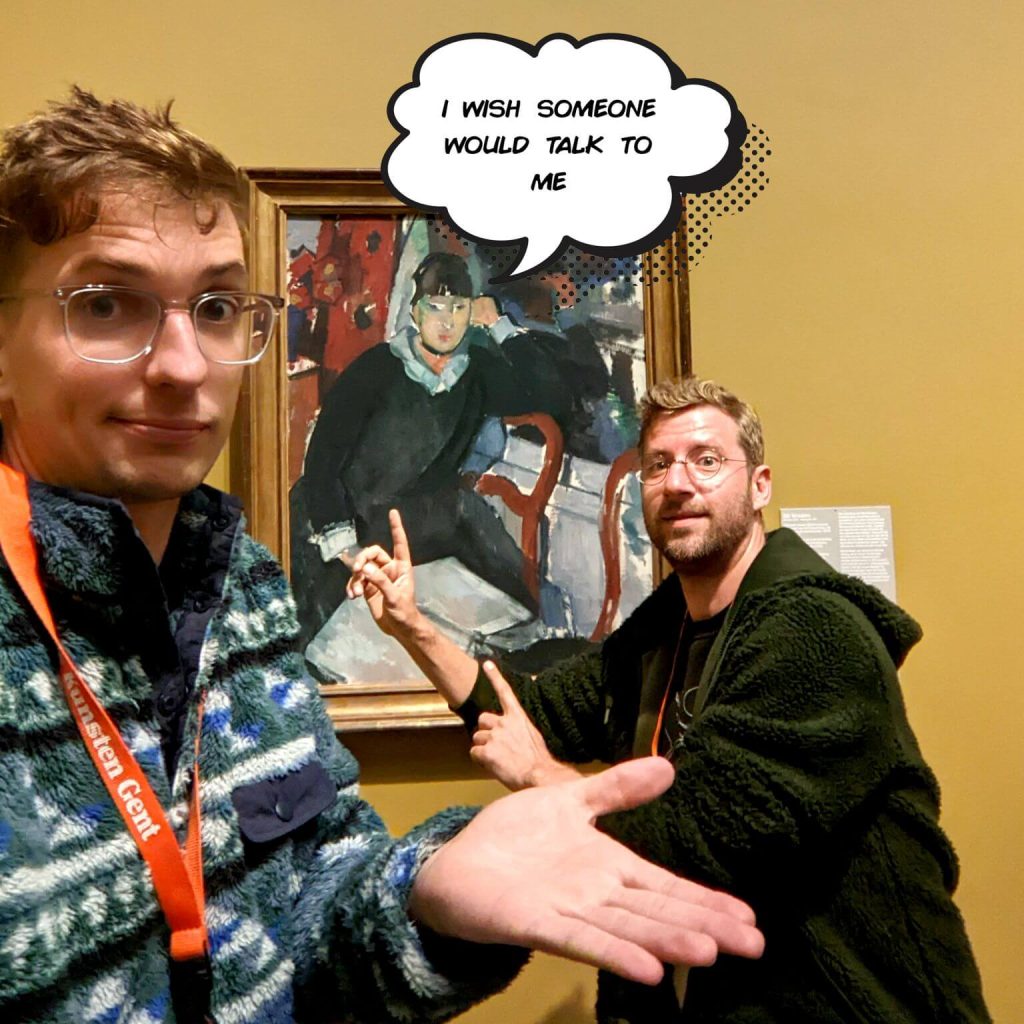
Benefits of AI in museums
- Ask Anything on your mind: A visitor can ask any question, in their own words and with their own frame of reference. For example, Children ask very different questions then art historians but an AI can answer both just as well
- AI creates links: people ask might ask questions about what they see on the painting and the AI can give further context. For example, the painting of Jenny Montigny was often asked: “why do you look so sad in the painting?”. The woman in the painting then went on to explain the rough conditions faced by farmers in the 19th century and that this is the reason she doesn’t look happy.
- Questions create insights: Knowing which questions visitors have, gives information about what your visitors are interested in. It reveals their motivation of why they’re coming to the museum. In our Talking Pictures project we log all questions and answers (anonymously) so they can be analyzed later
- Interactivity is fun: having a conversation is a two way street. No longer do you just passively listen to a human guide or an audioguide but you can ask questions and follow-up questions.
- Creates a personal connection: even if the voice is ‘just AI’, humans have a tendency to quickly create a bond with whatever thing we can communicate with. It’s different than chatting with ChatGPT in front of your PC or smartphone. Typing creates distance between yourself and the AI. Talking with it directly, hearing it, laughing with it and understanding it, creates a connection between the visitor and the artwork in a way no guide (audio or human) can produce.
- It’s factually correct: using our ‘Talking Picture’ service, you can rest assured that accuracy is as high as it possibly can be (as long as the information you give us is correct in the first place). They AI doesn’t stray or make up facts about the artwork.
Keep reading
How to create Mortal Kombat with AI characters video
The process detailing on how to make a Mortal Kombat…
Read MoreAI interviewer
AI interviews of visitor experience at famous war museum
Read Moretalking folk hero
World War 1 hero talks to visitors about his experiences…
Read Moretalking Romans
Museum of Fine Arts in Gent has 2 talking paintings
Read Moretalking paintings
Museum of Fine Arts in Gent has 2 talking paintings
Read More


